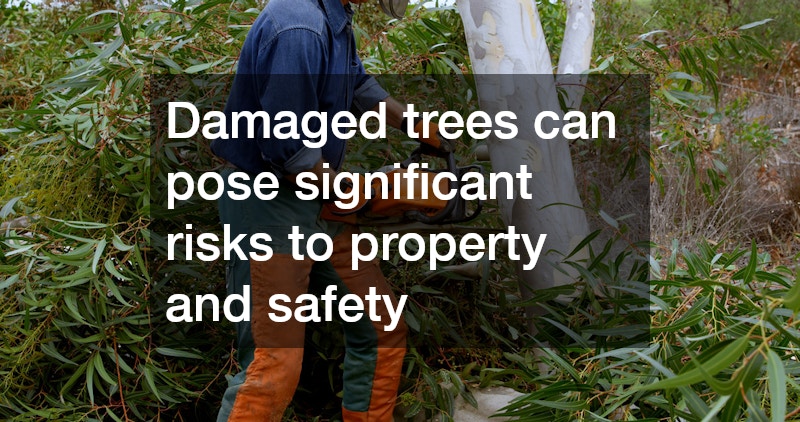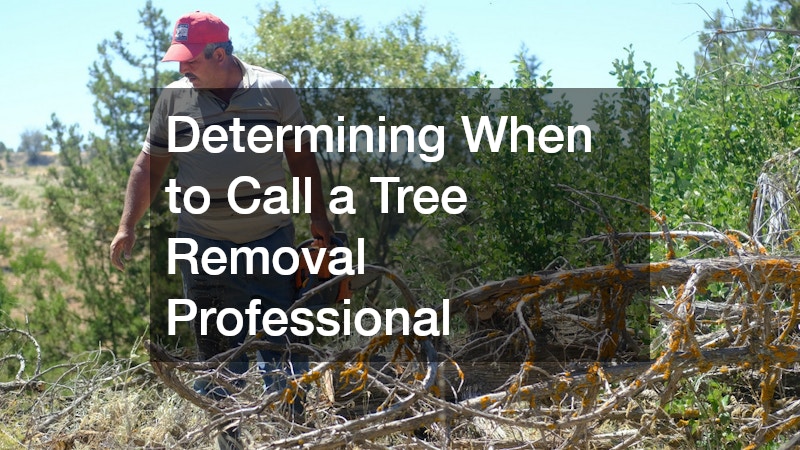There are important considerations to keep in mind when determining whether to call a tree removal professional. Explore common concerns and questions regarding tree removal to help homeowners make informed decisions.
Trees add beauty, shade, and value to any property, but there are times when they can become a safety hazard or liability. Determining when a tree needs to be professionally removed is an important part of responsible property maintenance.
Factors such as disease, structural instability, storm damage, or root interference can compromise a tree’s health and pose risks to nearby buildings or people. A professional arborist can assess the tree’s condition and identify whether pruning, treatment, or removal is the safest course of action. By recognizing the signs early and seeking expert guidance, homeowners can protect their property while maintaining a healthy and safe landscape.
Dead and Dying Trees
Understanding the signs of a dead or dying tree is critical in deciding whether to call a tree removal professional. Look for indicators such as leaf discoloration, which may suggest that the tree is struggling to obtain necessary nutrients. Trunk health is also a key factor; any cracks or peeling bark can signal a declining condition.
Additionally, you should observe the tree’s branches for signs of dying, such as excessive fall or fungus growth. These issues may arise from diseases or pests that can infect the entire tree, making it essential to act quickly. If the tree is losing leaves in the growing season or showing no signs of new growth, these are also alarming signs that indicate a need for professional assessment.
Lastly, consider the overall stability of the tree. A leaning tree or one that has recently lost large branches after a storm can represent a significant risk. If you are uncertain about the health of your tree, it is advisable to reach out to a tree removal professional who can perform a comprehensive evaluation and determine the best course of action for your landscape.
Risks of Leaving Damaged Trees
Damaged trees can pose significant risks to property and safety, making it imperative to address them swiftly. A visibly damaged tree may suffer structural weaknesses, increasing the probability of it falling or losing branches. This situation can become dire, especially if the tree is close to homes, vehicles, or common pedestrian pathways.
Moreover, many homeowners underestimate the susceptibility of damaged trees to pests and diseases, which can spread rapidly. A compromised tree can become a breeding ground for insects that further weaken its structure. Left untreated, these pests may infest healthy trees nearby, leading to an extensive loss of plant life.
Lastly, property insurance policies often require homeowners to maintain their landscapes properly. Failing to address obvious risks posed by damaged trees can result in claims being denied, potentially leaving you with the financial burden if an incident occurs. Consulting with tree removal professionals can help you mitigate these risks and preserve the integrity of your property.
Timing for Tree Removal
The timing of tree removal can affect the health of your landscape significantly. Generally, late fall and winter are considered prime seasons for tree removal, as trees are dormant during this period. This dormancy minimizes the shock to the remaining landscape and encourages recovery and regrowth in spring.
On the contrary, removing trees during the growing season can lead to stress for surrounding plants. It may expose roots that rely on other trees for protection and ecosystem stability. Furthermore, trees tend to attract pests more readily during warmer months, so understanding the ecological context is vital for making informed decisions.
Lastly, specific species may have restrictions on removal based on local ordinances or guidelines. Homeowners should communicate with tree removal professionals who understand these regulations and can provide the best advice tailored to your particular situation and region.
Questions to Ask a Professional
Before hiring a tree removal professional, it’s important to ask the right questions to ensure you choose a qualified service. Start by inquiring about their experience and qualifications in tree removal. You want to confirm that they are certified and knowledgeable about various tree species and the best methods for removal.
Next, ask for references or reviews from previous clients to gauge their reliability and quality of work. A reputable tree removal service should be willing to provide testimonials or showcase past projects to offer peace of mind regarding their services. Don’t hesitate to verify their insurance to protect yourself from any liabilities that may arise during the process.
Lastly, ensure you understand the comprehensive approach they take before, during, and after tree removal. Inquire about their waste disposal processes and whether they offer additional services, such as replanting or soil restoration. Armed with this information, you can make an informed decision that aligns with your needs and environmental considerations.
Deciding when to call a tree removal professional can be challenging, but understanding the key signs and considerations can lead to better decisions for your property. As we’ve covered in this article, recognizing the state of your trees, acknowledging risks, and understanding the financial implications are all vital factors. It’s always best to contact an expert for comprehensive assistance to ensure the safety and aesthetic value of your home.





